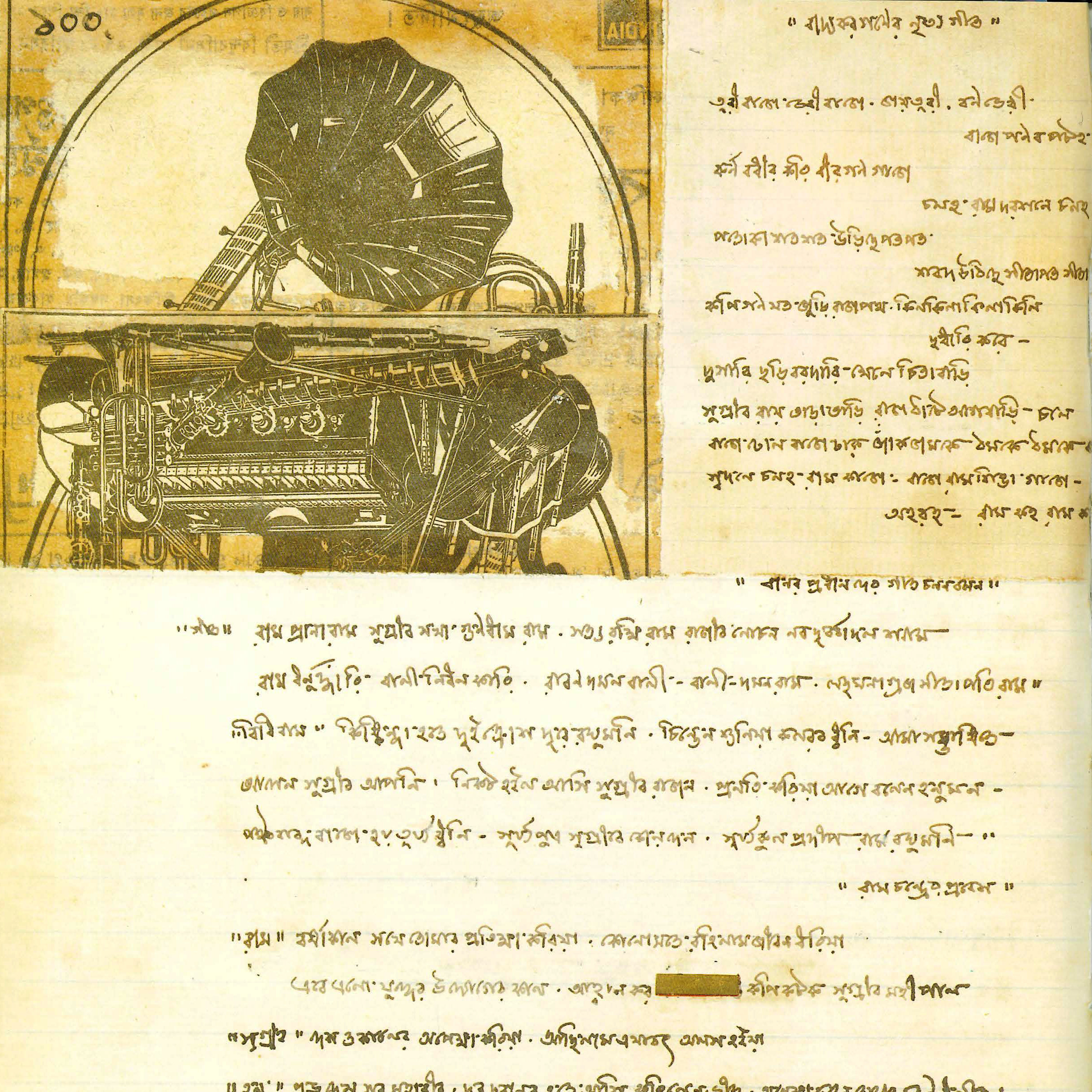Khuddur Yātrā: a Symphonic Poem of Texts and Images
A Photo Essay
Identifiers (Article)
Abstract
This essay offers an analysis of text-image relations in Abanindranath Tagore’s often overlooked work, Khuddur yātrā. The work is an experimental yātrā-play for children based on the Rāmāyaṇa, and was published in facsimile for the first time in 2009. The manuscript is illustrated with cutouts from newspapers, periodicals, and product wraps, creating a diverse visual landscape. The text of the play, equally complex, weaves together traditional Rāmāyaṇa heroes with new characters, while employing a multitude of languages and dialects. After providing a detailed overview of the work and categorizing text-image relations within it, this essay focuses on the single most complex and experimental one among those. Following Bachtin, who proposed to analyze literary work by using the musical concept of polyphony metaphorically, the author argues that the concept of symphonic poems provides the best way to approach the complexity of text-image congruencies in this work. Additionally, the essay explores some the thematic and visual connections between Abanindranath Tagore’s Khuddur yātrā and the broader landscape of Bengali children’s literature in the early 20th century. Upon closer examination, Khuddur yātrā emerges as a dynamic and layered artistic creation that challenges the viewer to construct new meanings when navigating the complex interplay of text and images. The text and images within the narrative perform various simultaneous functions, thereby encouraging both children and adults to construct, deconstruct, interpret, and reassess the surrounding reality. Abanindranath’s playful use of signs, symbols, and language reveals the intricate interconnectedness of the world, prompting viewers to recognize its complex and intertwined nature.
Statistics

License

This work is licensed under a Creative Commons Attribution-NonCommercial-NoDerivatives 4.0 International License.





